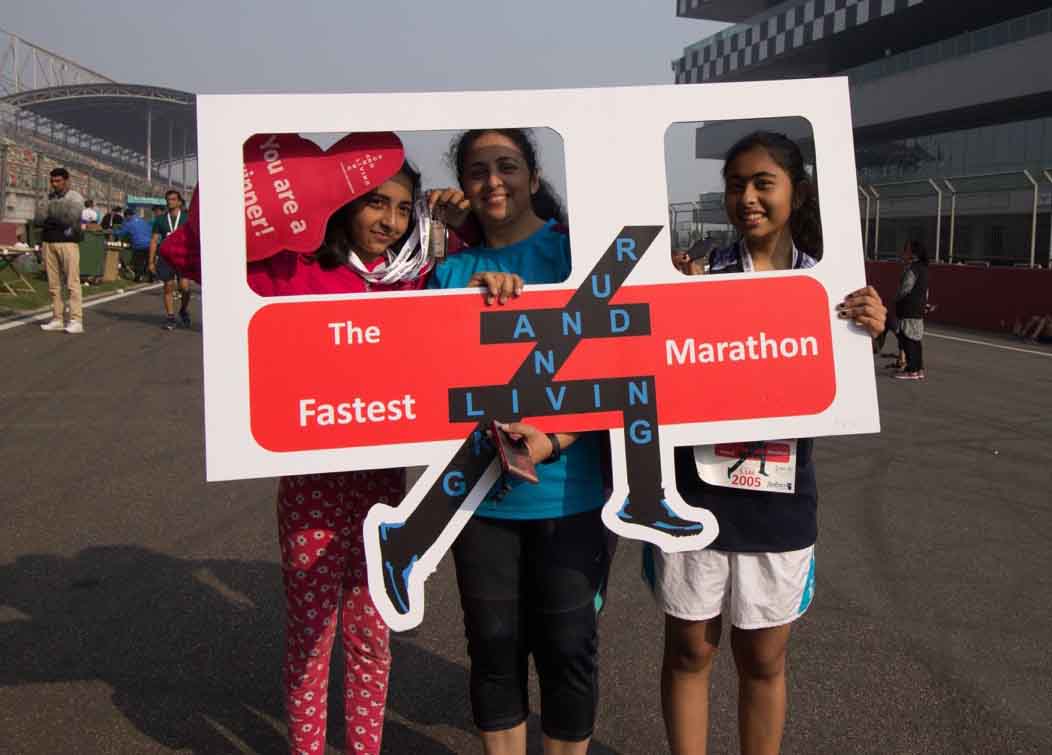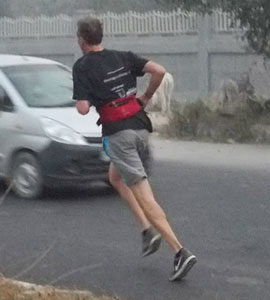 For The Keen Runner In You
For The Keen Runner In You
You are looking for something beyond just starting up.
A 5km race is a great way to focus on speed training and building speed even for longer runs
A 10km race is a great way to push yourself to the max as you build endurance while staying focused on maintaining as close to your 5km race speed. This is perhaps one of the toughest distances to race.
For the long distance runner in you, late Spring and Summer is a good time to focus on doing a great 5 or a 10k race. It also takes up less time, and requires some focus on strength training and flexibility while also building cardio vascular capabilities.
Race Training
For those who want to train for an upcoming race, we are providing a link to a running and training guru – Hal Higdon – who stays in Indiana, and whom I have had the pleasure of meeting a couple of times at the Chicago marathon expositions. Hal has been a champion marathoner in his time, at times less than 2:30, run over a 100 marathons, coached several thousand marathoners in his runs, and coached perhaps a million runners via his website. He is also a senior writer for Runners World.
Remember to listen to your body and take the rest days seriously, especially while training for a marathon.
“Success is a journey, not a destination. The doing is usually more important than the outcome. ”
Arthur Ashe, Tennis player
Running form– The critical starting point to building performance

Stand tall – raise your hands up and stretch as you raise your toes. Place your feet on the floor, stand straight and feel each part of your body relax.
Lean your torso forward 3-4 degrees – not too much and let gravity help pull you forward. Look straight ahead around 120-20 metres ahead – not up, or down.
For long distance running, practice shorter and quicker strides. This helps increase efficiency as your feet lift off the ground less, and fight less against gravity, and also help to get your foot contact to be in the mid foot rather than fore foot or heel.
Keep your arms and fists loose and swing them back and forth, not across your chest. Smile, enjoy the run and focus on positive thoughts.
5K Run : 8 week training schedule
Rest: keep your feet up from an exercise perspective. Do some slow stretches neck, shoulder, touching the toes
Easy walk: Keep to a pace where you can converse normally with your walking partner
Walk + 100m runs: walk for 10-15 mins and then run approx 100m as fast as YOU can. Dont worry about the pace, you should be out of breath at the end of that, walk for 10-15 minutes, catch your breath, rhythm and repeat sequence as many times as required
Brisk walk: Walk at a pace which makes you break into a sweat
Easy run: Walk at a brisk pace and when you feel up to it, convert to a slow jog for a while and if you are getting out of breath, revert to a brisk walk. Convert back to a slow jog once you feel up to it and repeat as many times as you want. You set the pace and the frequency, but don’t overdo it. For beginner runners, an easy jog does not mean you cannot take walking breaks. Take walking breaks in between, to catch up on your breath and resume, but remember – keep the pace down
Walk: Walk for 10mins and jog for 200m at a comfortable pace (not a sprint!) and then repeat
Run: Try and keep a slow and steady pace slower than race pace, you may want to vary the pace in between for variety
Tempo run: Slow pace for the first 10 minutes, and then pick up the pace for the middle third of the session, and slow down for the final third
Intermediate – wanting to improve your time (1mile =1.6km)
Advanced – looking for peak performance in the race (1mile =1.6km)
Do’s and Don’ts in the last week before your run Now that D day is near – congratulate yourself and feel good about your decision to run a race
Rest well and do not exert yourself this week – your body needs to build reserves rather than deplete them at this time. Think positive and reflect on the good runs and training you have had, rather on the training that you missed. Eat more carbohydrates – rice, pasta etc and cut out snacks, deep fried foods to build the body’s energy reserves.
Reduce tea, coffee, colas and alcohol (which are diuretic – ie they make you pee a lot more than usual), while you drink more water and juices to build your body’s hydration levels
Wear the gear you are going to run in – shoes, socks, undergarments, shorts and T shirt – and sunglasses or cap, headband etc over the course of this week and make sure you are comfortable in them
Have the same breakfast you are planning to have on Sunday, on Thursday and go for a 3 to 4 km run
Try to ensure that you are sleeping enough, as also well. Especially Thursday to Saturday – you need it
DO NOT exert yourself on Saturday and try and stay off your feet as much as you can
Have an early and a heavy carbohydrate lunch and dinner on Saturday to finish around 7-8pm at the latest, to allow a couple hours for it to settle, before you sleep
Do not think of work and your life’s worries. Think of the course and the fun and excitement you are going to have
Sleep early on Saturday and get up refreshed and excited on Sunday. Don’t be anxious if you have not been able to sleep well on Saturday due to pre race excitement. You should have had a good sleep on each of Thursday and Friday.
For the 1st timer (1mile =1.6km)
Do’s and don’ts the day before, and the day of the run
Details for the day before:
Do:
Relax – physically and mentally
Focus on the days of your training when you felt really good
Get family and friends to cheer you
Get your kit out for tomorrow – shorts, undergarments, shoes, socks, T shirt with chest number pinned
Make sure there is no sand/ grit in your shoes
Cut your toe nails
Drink more water through the day than usual
Eat dinner early and eat well.
Sleep early a few hours after dinner
Do Not:
Do lot’s of work at home – you may strain yourself or pull your back
Eat anything new – your stomach might not handle it well
Think of how little you have trained or how unfit you are feeling
Have a late night
Before the run:
Have a light breakfast of a banana/ orange juice and water as soon as you wake up
Hopefully this is nothing new for you – this is quick to digest, and is energy giving
Get to the start point 45 minutes earlier
Do a light warm up
During your run:
Start slower than normal. Trust me. I have run 29 marathons and am still learning
It is very easy to get carried away by the enthusiasm of the crowd and the atmosphere
Smile at others, and cheer on fellow runners – it lightens your load
Check how you are feeling after 2km, and quicken your pace if you are feeling good
At around the 4km mark for a 5km runner and at 7km for a 10km runner, if you are feeling good, pick up the pace further.
Sprint the last 100m – you will end on a high
Smile for the cameras – you will treasure the great photos of yourself
Post the run
Walk briskly for 5 minutes
Stretch
Congratulate yourself
10K Run : 8 week training schedule
Intermediate – wanting to improve your time (1mile =1.6km)
Advanced – looking for peak performance in the race (1mile =1.6km)
VO2 max is a term commonly used by runners to assess your body’s efficiency in processing atmospheric oxygen. It is the maximum volume (V) of oxygen (O2) in milliliters that you can use in one minute, per kilogram of body weight, while breathing air at sea level.
Knowing your VO2 Max is good for those keen on testing and improving on their personal fitness. Still others will use that piece of information to assess how they compare to others (“standards”) who are doing their same sport. By knowing what your current VO2 Max is, you can objectively assess your progress as you improve your cardiovascular fitness.
VO2 Max of an average male 20-29 years of age is: 38-43.
VO2 Max of endurance cyclists or runners: >75 ml/kg/min.
Highest VO2 Max ever recorded for a man: 94 (Nordic skier)
Highest VO2 Max for a women: 77 (Also Nordic skier)
Check out your VDOT level from your most recent ‘race’ and try and approximate pace for longer or shorter distances as your ‘race pace. See this table
To improve your stamina, pace and VO2 MAX try this simple 7 week plan:
Cross Train – aerobic exercise other than running – cycling, swimming, tennis, squash
400m repeats – warm up with a slow run of 1-2 km, run a 400m race flat out, walk.jog 1-2 minutes and regain your heart and breathing rate, repeat the 400m race and so on. End with a 1-2km slow run
Tempo run – divide your run into thirds eg in a 30 minute tempo run, start with a 10 minute slow run, start picking up pace over the next 4 minutes and hold your fastest pace for a couple of minutes, then reduce pace gradually over the next 4 minutes, and then end with a 10 minute slow run.
Long slow run – should be done at a pace where you can converse with a running partner and not be out of breath In the training programs where there is a mention of running at 5K pace or 10K pace – you need to check your ‘race pace’ for that distance, especially if you have never run one before or have not run one in a long time, by seeing your timing for the most recent race you have run, and see what your VO2 max is and what your time in a shorter or longer distances could be extrapolated to.
To keep track of your progress and see how you are unleashing your potential, print out the table below and surprise yourself

If you would like to receive a free brief monthly mailer on news, stories, information and fun stuff on running – drop us a mail at contactus@runningandliving.com and send us your name and city of residence”

 contactus@runningandliving.com
contactus@runningandliving.com click here
click here click here
click here